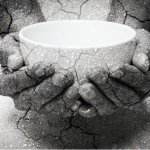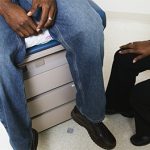Asked whether she would now recommend that patients on TNF inhibitors automatically take continuous NSAIDs, she gave a firm “no.”
“I would love to see a randomized controlled trial to prove causality, but at the end of the day, we treat patients based on symptoms,” she said. “And if patients have absolutely no disease activity by symptoms on a TNF inhibitor, I would never tell them to add an NSAID.”
Allopurinal & Gout
In another study, researchers found that there was no increased risk of chronic kidney disease (CKD) of at least Stage 3 from the urate-lowering therapy allopurinol use in newly diagnosed gout patients who start out with normal or near-normal kidney function.2
Physicians are cautious about using allopurinol in patients with CKD, using lower dosing or not using it at all, and about 20% of people with gout have CKD. But data are limited for those with normal kidney function who take allopurinol.
Researchers examined data from The Health Improvement Network, a general practitioner electronic medical records database that is meant to represent the general U.K. population. Drawn from about 44,000 patients, 13,685 patients who began allopurinol during the study period were matched with 13,685 nonusers. The groups were similar demographically, in their comorbidities, in the other medications they were taking, and in lab data, said Ana Beatriz Vargas-Santos, MD, a rheumatologist who was a research fellow at Boston University School of Medicine.
Among the allopurinol users over an average follow-up of four years, there were 1,384 cases of CKD Stage 3 or higher, and 1,372 among the allopurinol nonusers, a difference that was not significant (hazards ratio 0.99, 95% CI 0.92–1.07).
“This is an important message for healthcare providers, highlighting that therapy for gout with allopurinol does not appear to have a harmful effect on renal function,” Dr. Vargas-Santos said.
Financial Impact on Disease
Researchers at UCSF found that SLE patients who were poor from 2003 through 2009 accrued more disease damage through 2015 than those patients who were not poor.3 Most of the difference came from patients with the highest “dose” of poverty, with patients poor during the entire period accruing twice as much damage as those who were never poor. The differences were not as stark between those were never poor and those who were poor during only some of those years, suggesting that withdrawal from poverty could improve results.
“The relationship between poverty and damage accrual meets epidemiological criteria for plausibility based on dose-response and withdrawal of exposure,” said Edward Yelin, PhD, professor in residence of medicine and health policy at UCSF. “The next steps are to explore why poverty may lead to increased levels of damage accrual.”


